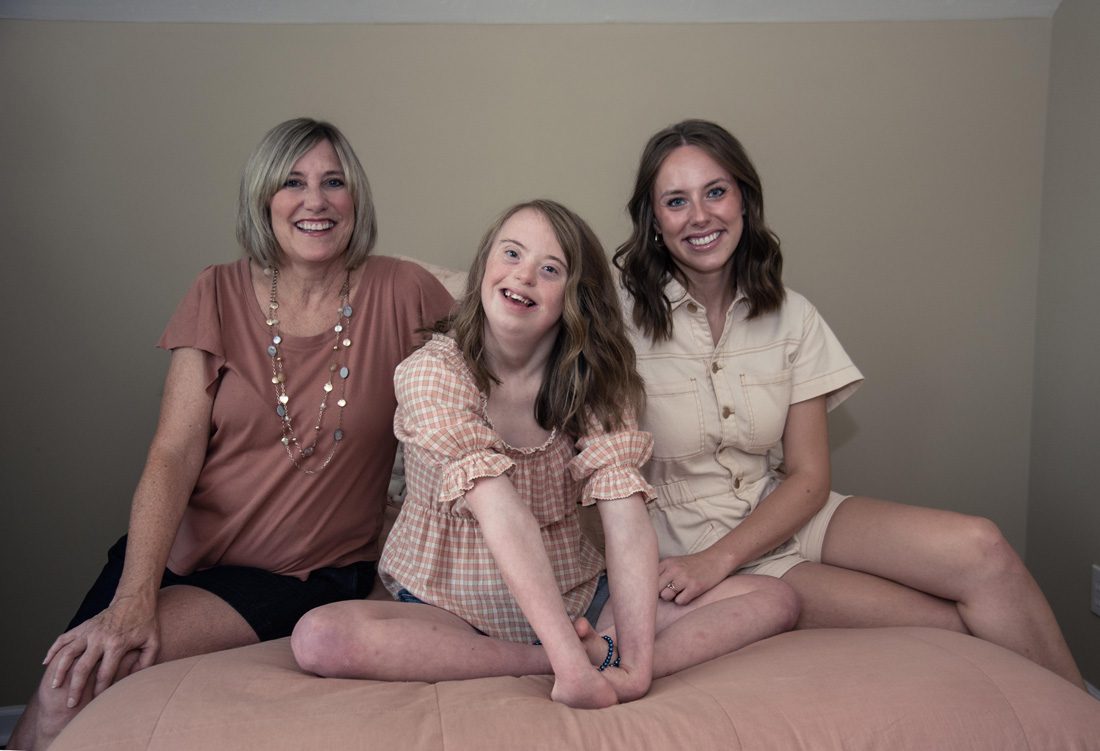Implanted devices keep kids sleeping soundly.

For much of her child’s early life, neither Nikki Vanderberg nor her daughter, Cassie, got much rest. Cassie’s severe case of sleep apnea connected to her Down Syndrome was keeping them both awake.
“It was so hard,” Vanderberg says. “I could hear her stop breathing and then gasping.”
Even after following the standard recommendation to have Cassie’s tonsils removed, the situation didn’t improve. The next step was to use a continuous positive airway pressure (CPAP) machine, but that wasn’t much help either: Finding a mask small enough to fit a child was a challenge, and even after getting one, Cassie constantly fought wearing it.
The struggle continued after the family moved to Atlanta in 2014. But it wasn’t long before Vanderberg’s doctor recommended a visit to Dr. Nikhila Raol, a Children’s Healthcare of Atlanta ear, nose and throat specialist conducting a clinical trial on an implantable device designed specifically for Down Syndrome children who suffer from severe sleep apnea.
“I’d never heard of it before, but they thought Cassie would be a great candidate,” Vanderberg says. “They had to run all sorts of tests and sleep studies, but finally, in 2017, when she was 10, she was the youngest person to get the implant.”
The device, marketed under the name Inspire, is designed specifically for adolescents and young adults with Down Syndrome, cerebral palsy or other cranial issues. These patients have significantly higher rates of sleep apnea: between 30 and 60% compared to the general pediatric population, where rates range from 1 to 4%. In the medical trials, the device had a 73% success rate, measured by the numbers of patients who dropped out of the “severe” range. In some cases, patients were cured.
“Much of the time, these children have issues with sleep apnea because they have a different facial skeleton,” Raol says. “The tongue is large, they have less muscle tone, and they tend to be overweight or obese—all things that contribute to sleep apnea.”
The device, about the size of a pacemaker, is implanted in the patient’s chest. Sensors are placed near the lungs and under the chin to move the tongue out of the airway.
“It was a major surgery for a little girl,” Vanderberg says. “But after she healed and recovered, and we went through several more sleep studies to check the results, things changed immediately.”
Vanderberg turns on the battery-operated device when Cassie goes to bed and shuts it down each morning. “It’s pretty incredible,” she says. “I don’t hear her stop breathing. It’s been life changing. Sleep has gotten so much better for both of us.”
Along with similar sleep success stories, Raol has heard from parents that their children also have improved cognition and speech. “It’s all anecdotal, but it has given us the idea for another trial,” she says.
Raol also encourages parents with children who might be helped by the device to explore the possibilities with their doctors. “Getting it approved has really improved access for many more children.”
CHILDREN’S HEALTHCARE OF ATLANTA
404.785.5437
choa.org
@childrensatl
PHOTO: Joann Vitelli
Atlanta-based writer and editor contributing to a number of local and state-wide publications. Instructor in Georgia State’s Communication department and Emory’s Continuing Education division.

















